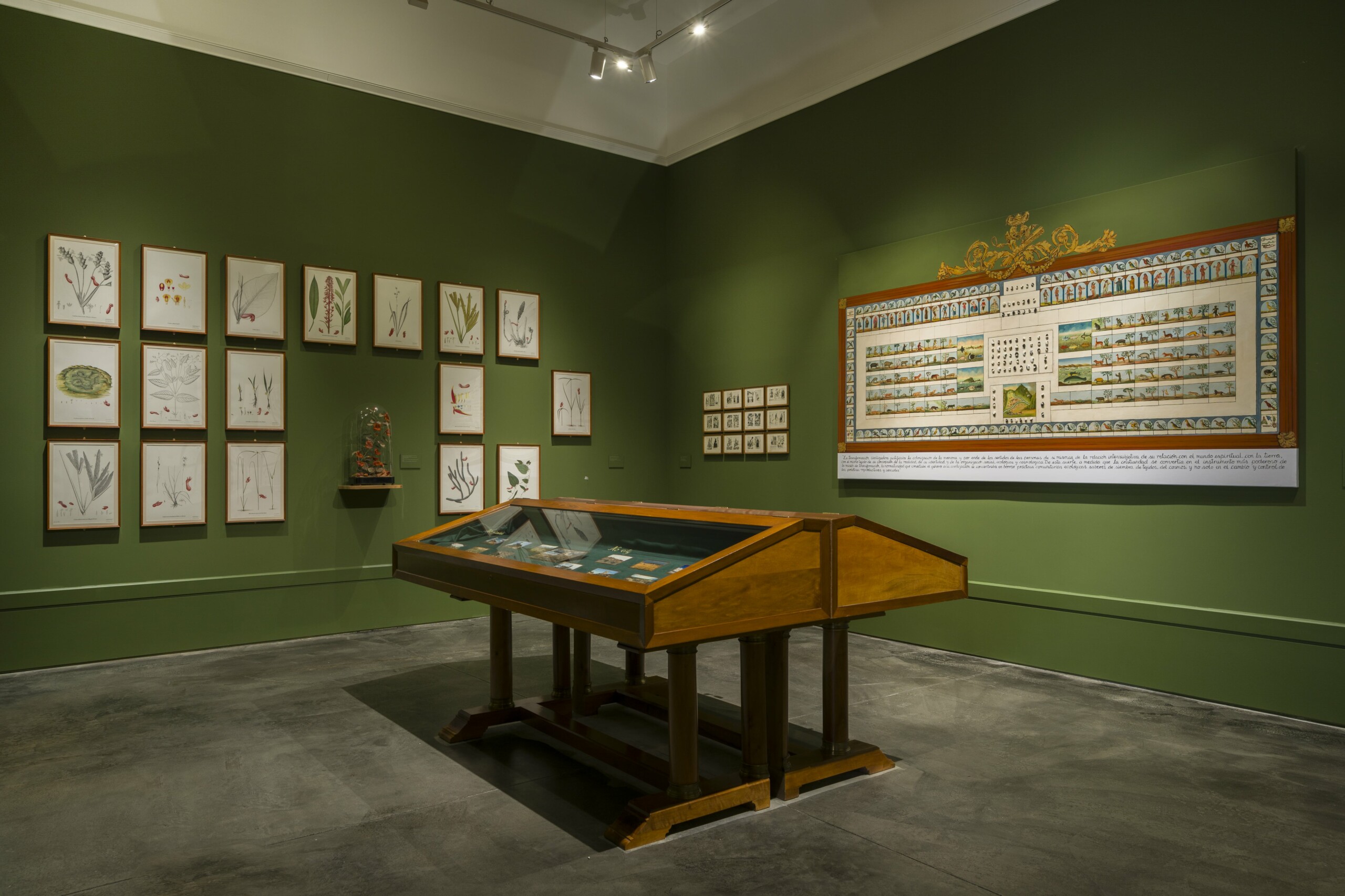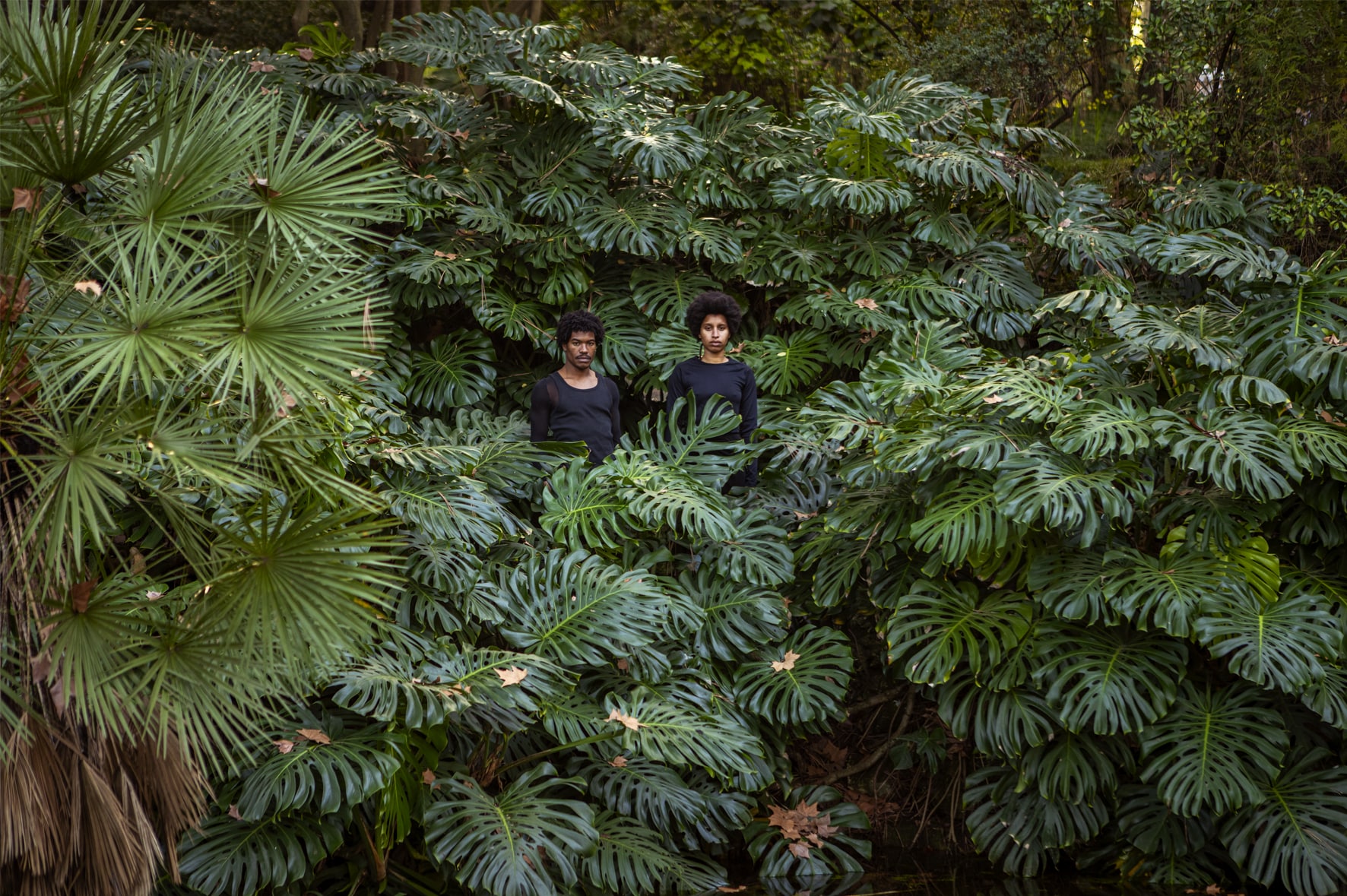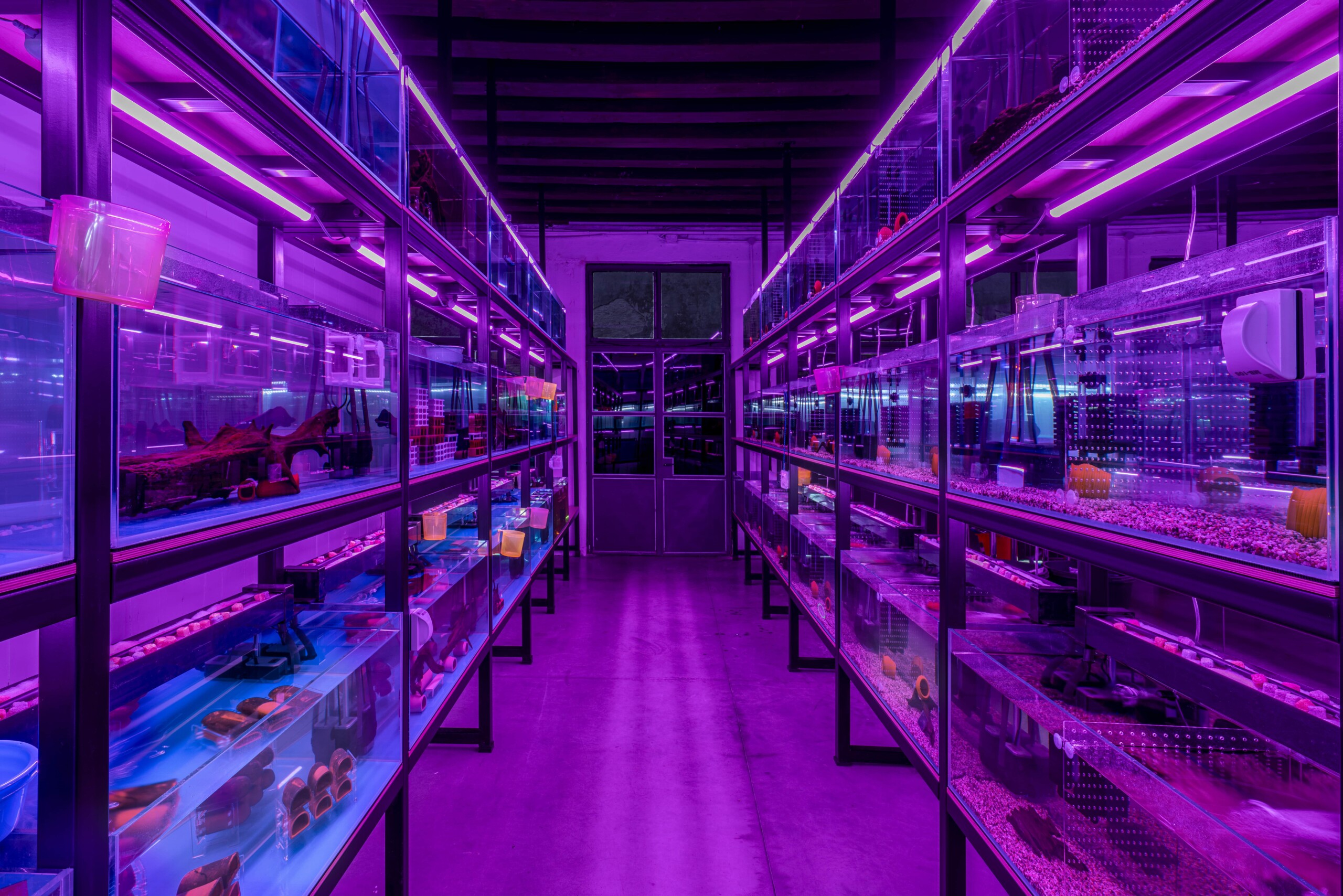The 60th edition of the Venice Biennale, under the curatorial direction of Adriano Pedrosa and centred around the theme “Foreigners Everywhere“, which opened April 20th, seeks to address the oversights and inequalities carried by a Western and colonialist art history, advocating for a greater diversity of perspectives and cultures. The innumerable national pavilions and satellite exhibitions in Venice have intelligently broadened this reflection on ‘foreignness’ to encompass all living beings, often thanks to indigenous perspectives, which bring a great richness to this year’s edition.
In the central exhibition, environmental issues are integrated as components of a broader, anthropological and social vision embodied by various indigenous peoples. The works of prominent artists from these communities, including Aycoobo, Abel Rodríguez, Santiago Yahuarcani, and Joseca Mokahesi Yanomami, bring to our attention the destiny we share with an ever-more-fragile natural ecosystem. Among contemporary artists, a monumental installation by Daniel Otero Torres highlights the sustainable water management employed by the Embera indigenous community in Colombia, whose livelihood is currently threatened by gold miners.
 Pinacoteca migrante, Sandra Gamarra Heshiki, au Pavillon de l’Espagne © Sandra Gamarra Heshiki
Pinacoteca migrante, Sandra Gamarra Heshiki, au Pavillon de l’Espagne © Sandra Gamarra Heshiki
Extractivism is a recurring theme within the national pavilions, particularly its relationship with colonial movements and its enduring effects today on the environmental crisis. Brazil, South Africa, the Democratic Republic of the Congo, and Nigeria all address the connected issues of land dispossession and natural resource depletion. Sandra Gamarra Heshiki, the first migrant artist chosen to represent Spain, centers her challenge on the Western concept of the museum as the foremost narrator of “universal” grand narratives. Within a reconstituted museum-like art gallery, she presents the historically suppressed narratives of ‘migrants’ – the humans, living organisms, plants, and raw materials that have been forcibly carried back and forth. At the Portuguese pavilion, artist-curators Mónica de Miranda, Sónia Vaz Borges, and Vânia Gala set up the collective project “Greenhouse” inside Palazzo Franchetti to revisit the idea of the “creole garden,” which was traditionally cultivated by enslaved people to meet their needs, comprising a wide diversity of plant species. This garden, used as a metaphor for resilience and freedom against colonial empires, transforms a space of subordination into a place of resistance and autonomy. For the Singapore pavilion, Robert Zhao Renhui focused on the “secondary forests” of the archipelago, witnesses to the country’s rapid urbanization. These forests, regenerated from lands once cleared for agriculture, reveal nature’s optimism-inducing ability to reclaim its rights when human intervention ceases. The artist has meticulously explored these constantly evolving ecosystems, condensing decades of observations into an immersive installation that presents a visual and auditory array of migrant species. Argentina, with artist Luciana Lamothe, staged nature’s ability to adapt and regenerate in the face of environmental adversities through sculptures dynamically interacting with their space.
 Creole Garden par Mónica de Miranda au Pavillon du Portugal © Mónica de Miranda
Creole Garden par Mónica de Miranda au Pavillon du Portugal © Mónica de Miranda
Representing indigenous cosmologies is another major focus of the biennale. The Philippine pavilion honours one of its emblematic mountains, Mount Banahaw, a national symbol of resistance, highlighting its cultural significance and spiritual strength. Roberto Huarcaya’s immense photogram for the Peruvian pavilion focuses on the Amazon, but rather than directly capturing it, lets it express itself on photosensitive paper. Other pavilions examined the mechanisms of human domination over other animal species. At the Czech pavilion, Eva Kotátková alerts on the violence of animal captivity with her collaborative project “The heart of a giraffe in captivity weighs 12 kg less.” The artist, through a monumental reconstitution of a giraffe’s innards, revisits the tragic fate of one captured in Kenya in 1954, transported to the Prague zoo, where it survived only two years. Trevor Yeung, with a series of uninhabited aquariums at the Hong Kong pavilion, questions the ambiguities of animal domestication, and the tension between care and control.
 Cave of Avoidance (Not Yours), Trevor Yeung au Pavillon de Hong Kong © Trevor Yeung
Cave of Avoidance (Not Yours), Trevor Yeung au Pavillon de Hong Kong © Trevor Yeung
The satellite exhibitions around Venice also resonated with the central themes of the Biennale, offering various immersive experiences. Curated by Filipa Ramos and realized by Carlos Casas, “Bestiari” provides a sensory and hypnotic stroll to encounter the animals and mystical creatures populating Catalan landscapes and imagination. At TBA21’s Ocean Space, located in the decommissioned Church of San Lorenzo, the exhibition “Re-Stor(y)ing Oceania” features interactive installations and performances by Latai Taumoepeau and Elisapeta Hinemoa Heta, exploring the impacts of climate change on Pacific islands and highlighting the voices of local populations. Finally, Josefa Ntjam, with “swell of spæc(i)es,” responds to the sensitivities of Biennale curator Adriano Pedrosa by transporting us into an interweaving of cosmogonic narratives, through videos and sculptures, exposing us to the diversity of possible foundational myths of our world.
Author: Aloïs Loizeau
Translated from French by Stefano Vendramin
Cover : Trash Stratum, Robert Zhao Renhui, at the Singapore Pavilion © Robert Zhao Renhui
Pavilions and exhibitions mentioned:
Main Exhibition
Stranieri Ovunque – Foreigners Everywhere
20 April – 24 November 2024
Curator: Adriano Pedrosa
Pavilion Argentina
Hopefully the doors will collapse
Luciana Lamothe
Curator: Sofia Dourron
Arsenale, Sale d’Armi
Pavilion Brazil
Ka’a Pûera: we are walking birds
Glicéria Tupinambá, Olinda Tupinambá et Ziel Karapotó
Curators: Arissana Pataxó, Denilson Baniwa, Gustavo Caboco Wapichana
Giardini
Pavilion Democratic Republic of Congo
RUMB’ART
André lufwa Mauridi, Wuma Mbambila Ndombasi, Alfred Liyolo, Freddy Tsimba, Franck Dikisongele, Freddy Lokole, Cedric Sungo, Steve Bondoma
Curators: Michele Gervasuti, James Putnam
Gervasuti Foundation – Palazzo Canova
Pavilion Czech Republic
Le cœur d’une girafe en captivité pèse 12 kg de moins
Eva Kotátková (en collaboration avec Himali Singh Soin, David Tappeser, Gesturing Towards Decolonial Futures and children’s and older people’s collectives)
Curator: Hana Janečková
Giardini
Pavilion Portugal
Greenhouse
Curators/Exhibitors: Mónica de Miranda, Sónia Vaz Borges, Vânia Gala
Palazzo Franchetti
Pavilion Singapore
Seeing Forest
Robert Zhao Renhui
Curator: Haeju KIM
Arsenale
Pavilion South Africa
Quiet Ground
MADEYOULOOK– Molemo Moiloa and Nare Mokgotho
Curator: Portia Malatjie
Arsenale, Sale d’Armi
Pavilion Spain
Pinacoteca Migrante
Sandra Gamarra Heshiki
Curator: Agustín Pérez Rubio
Giardini
Bestiari
Carlos Casas
Curator: Filipa Ramos
Catalonia in Venice
Docks Cantieri Cucchini
Re-Stor(y)ing Oceania
Latai Taumoepeau, Elisapeta Hinemoa Heta
TBA21–Academy & Ocean Space
Curator: Taloi Havini
Campo San Lorenzo
Swell of spæc(i)es
Josèfa Ntjam
LAS Art Foundation
Accademia di Belle Arti
Also to be seen :
Liminal
Pierre Huyghe
Palazzo Grassi
When Solidarity Is Not a Metaphor
Paula Valero (parmi d’autres)
Arsenale, Navy Officer’s Club
Arena for a Tree
Klaus Littmann
Arsenale Nord
From Ukraine: Dare to Dream
Allora & Calzadilla, Otobong Nkanga (parmi d’autres)
Victor Pinchuk Foundation & Pinchuk Art Centre
Palazzo Contarini Polignac
Pavilion Benin
Everything Precious Is Fragile
Ishola Akpo, Moufouli Bello, Romuald Hazoumè et Chloé Quenum
Curator: Azu Nwagbogu
Arsenale
Pavilion Lituania
Inflammation
Pakui Hardware, Marija Teresė Rožanskaitė
Curators: Valentinas Klimašauskas, João Laia
Chiesa di Sant’Antoni
Impact Art News, March-May 2024 #48
Subscribe to Impact Art News (free)

